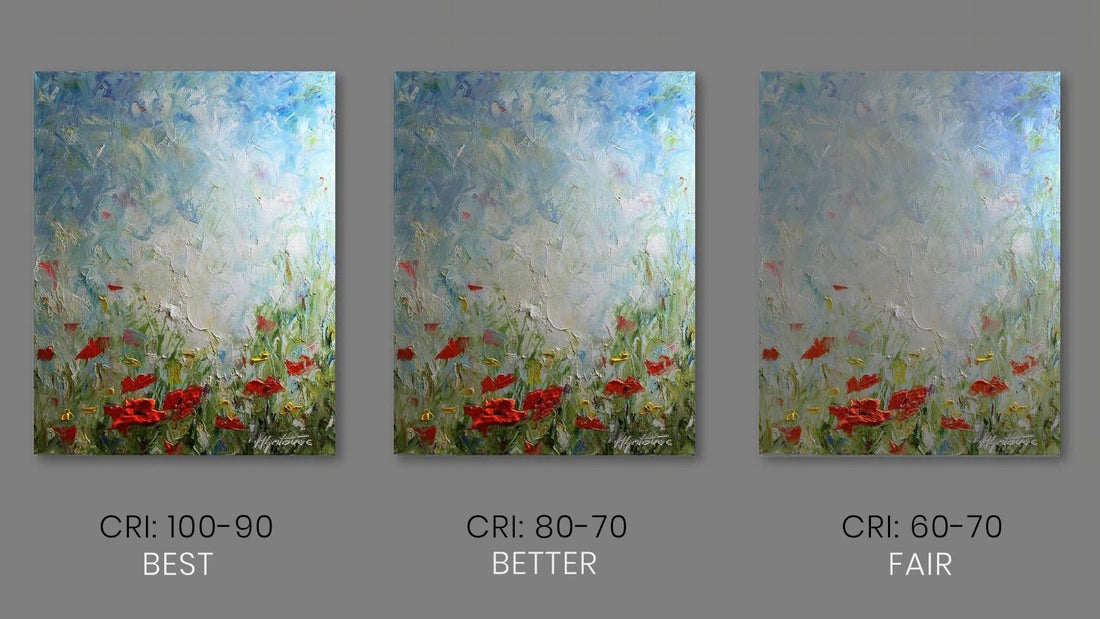The store's lighting could be the reason if you've ever bought fruit there and observed that the color looks different in natural light. More specifically, the lighting has subpar color rendering.

The Lighting and Color Rendering Index
The type of light bulb you use in your house can greatly change the look of a specific area. The color rendering index is often cited as the reason for this. The Color Rendering Index (CRI) measures how accurately an artificial light source can reproduce the colors of an object compared to a natural light source, such as sunlight entering through your windows. In other words, it is the measurement of light in relation to its impact on color perception. The light's "temperature" may also have an impact on this range.
What CRI Can’t Do
CRI can’t tell us the brightness of a light source
CRI can’t tell us the color temperature
Lighting temperatures can vary, ranging from infrared light that is undetectable to light from skylights and ultraviolet light. Depending on your needs, you should ideally select the lighting that will best illuminate each room.
Sunlight has a perfect Color Rendering Index (CRI) of 100 because it accurately displays an object's true colors. When determining the Color Rendering Index (CRI), natural light serves as the benchmark against which all other light sources are measured. Depending on the light source, the hue of your skin, the food on the kitchen counter, and the clothes in the store will all appear differently.

Considering CRI for Lighting Fixtures
CRI (Color Rendering Index) for lighting is an important factor to consider when selecting light bulbs for your home. For the best possible appearance of your furniture, decor, paint colors, and reflections, everything should have vibrant colors. It may also impair your vision when performing specific tasks, such as reading a book or watching television, or even hinder your ability to detect mold in the kitchen while cooking.

Higher-rated bulbs will typically produce a more accurate color rendition of the surrounding objects. For applications such as wall pictures with lights or art light in a museum, this can be essential. It may also have an impact on your home and you. Choosing lightbulbs that mimic natural outdoor lighting is the most effective method for achieving clarity and brightness in your surroundings.
Both halogen and incandescent light sources have high Color Rendering Index (CRI) scores (over 90). The CRI rating of discharge lamps, such as fluorescent lights, is low because their light comes from a narrow range of wavelengths.
Greater longevity compared to halogen or incandescent lights: Our LED Picture Light are rated for 50,000 hours of use. That's five hours a day, for nearly 27 years of use.
When LED lighting was introduced to homes, the CRI (Color Rendering Index) scale gained popularity. To inform consumers about the features of their bulbs, many modern light bulb manufacturers include a "lighting facts" section on their packaging. The color rendering index (CRI) scale, lumens, watts, and efficiency metrics should all be included in these specifications. To ensure that the colors in your home are accurately represented, opt for lighting with a higher Color Rendering Index (CRI) rating.
The CRI Bottom Line
There are numerous factors to consider when selecting the appropriate lighting for your home. Of course, factors such as energy efficiency and the number of hours of use per bulb matter. To ensure that your surroundings are filled with beautiful colors and are brighter, clearer, and full of light, you may also refer to the CRI scale. The wise choice is LED illumination, and LED bulbs are now more accessible and diverse than ever. Additionally, an increasing number of lighting manufacturers are transitioning to integrated LED fixtures, which encompass all the benefits of a higher CRI rating.

